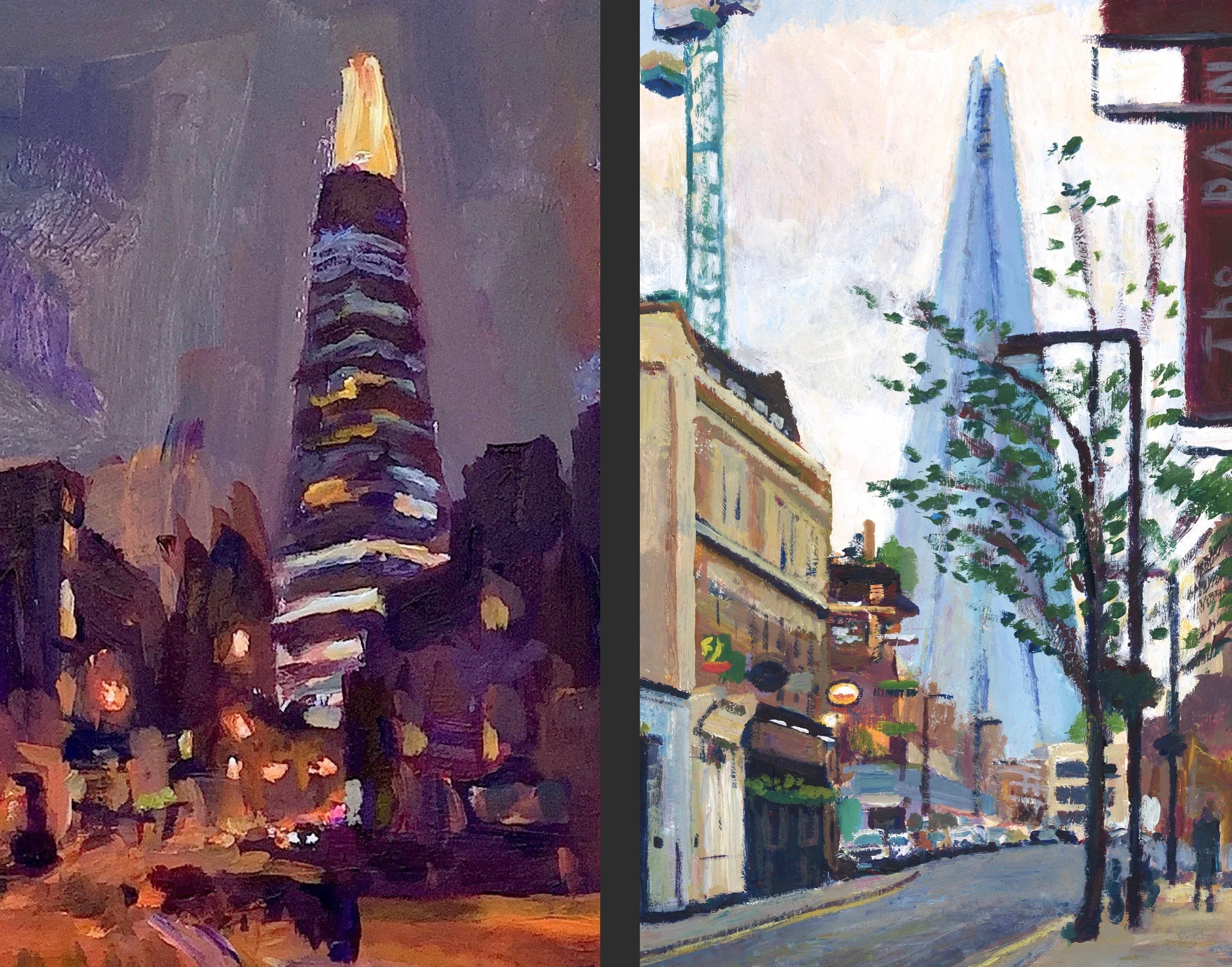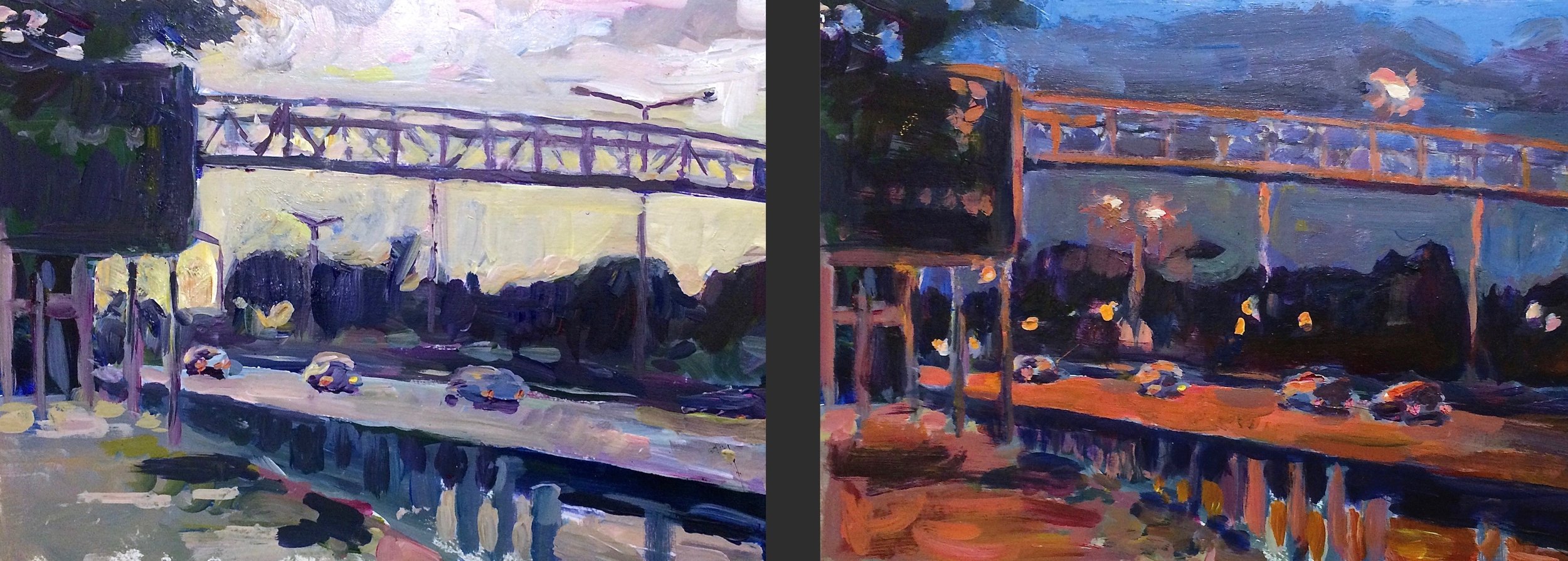The Shard and Union Street, SE1 (detail) & The Shard and Union Street, SE1 (detail), acrylic on board
Painting isn't like a 9-to-5 job. Take a quick look at my gallery pages and you can see that there are several ‘out-of-hours’ pictures, made after dark, placed alongside daytime renditions of the same landscapes. Much of my work over the years has been inspired by the vision of French Impressionism, especially the aim of capturing subtle and rapid changes in lighting conditions of contemporary and localised scenes. Claude Monet’s haystacks and Rouen Cathedral series are great example of this minute recording of mercurially shifting light.
In a modern experience, my mind’s eye is cast back to a home decorating book titled "Choosing a Colour Scheme" (published in 1988) that gave examples on how to use colour successfully in a domestic setting. It featured two photographs of a living room, taken from the same viewpoint, that was illuminated in the daytime and also at night. I was intrigued at how objects, colours and ambience were transformed radically by illumination.
A few years back I obtained a copy of "David Hockney's Pictures" (published 2004), a fabulous book featuring the prominent British painter's prolific output depicting everyday life, portraits and scenery. It included two Picasso-esque paintings of an interior of a beach house, one by day and one by night. Like the living room photographs featured in the decorating book mentioned above, the beach house in Hockney's paintings illustrated both subtle and stark colours in a localised environment when illuminated by contrasting lighting conditions.
Tower Bridge, Night & Tower Bridge, Day, acrylic on board
Being a plein-air painter means that I get the chance to experience such contrasting changes of light first hand. Two paintings, 'Tower Bridge, Night' & 'Tower Bridge, Day', were made from the same location on the by the River Thames close to London Bridge. Details such as white LED lighting on Tower Bridge in the distance and the illuminated interior of the pleasure boat in the foreground seem to give the painting an appearance slightly reminiscent of a photographic negative when compared to the daytime version.
Towards Sunset on A406, reworked as A406 Westbound after Dusk, acrylic on card
Not all paintings of the same scene that I have made are separate works of art. In the case of 'Toward Sunset on A406', for example, I inadvertently altered the painting in radical fashion when the bright sunset in the sky suddenly changed into a greyish-blue dusky darkness which, coupled with the imminent glow of orange sodium highway lighting, transformed the picture completely.
Kew Green, Night & Kew Green, Spring, acrylic on board
The above images of Kew Green were part of a protracted series of commissioned daylight paintings depicting a pond as seen through the four seasons (read the blog about the series here) which were coupled with a night-time version, rather like a coda. Compared to the daytime version, this 'coda' shows the artificial monochromatic quality typical of sodium street lighting, juxtaposed with a violet coloured night sky and an inky black pond.
Spatial awareness and colour perception change in darkness. As a fine artist, I enjoy the challenge of painting the enchanting, mysterious and reductive quality that night-time brings to familiar places and scenes. I find relief, however, in the daylight where less is hidden and obscured. I find it interesting to place daytime and night-time side by side because it helps me appreciate the aesthetic qualities of each.



